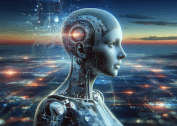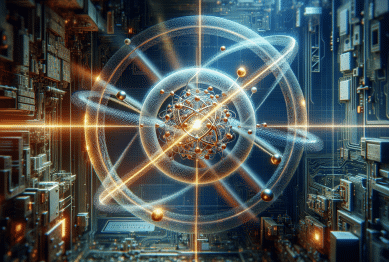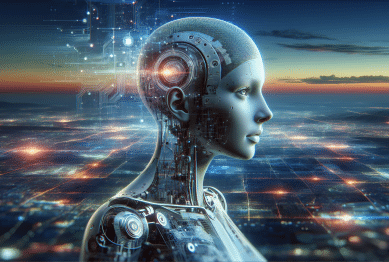Artificial intelligence is transforming the way you engage with technology every day. This guide examines emerging AI trends in 2025, exploring how advancements in machine learning, ethical AI, privacy, and automation could reshape your digital experiences.
AI Integration Expands Across Daily Life
AI integration is becoming a defining element of modern living. In 2025, connected devices — from virtual assistants to wearable technology — are anticipated to rely on machine learning more than ever before. Households use AI-enabled thermostats and lighting systems for optimal efficiency. Meanwhile, mobile devices process language and images faster, enabling smoother communication and smart suggestions. Consumers can now experience personalized entertainment, targeted news, and even AI-curated playlists, showing how deeply artificial intelligence shapes user interaction with digital ecosystems (Source: Brookings Institution).
AI’s influence also continues to reshape how people work and learn. For example, organizations employ advanced automation to streamline repetitive tasks, freeing up creative capacity for workers. Video conferencing platforms and workflow management tools now leverage AI for automated transcriptions and smart meeting scheduling. Students experience intelligent tutoring systems, enhancing outcomes through adaptive learning techniques that respond in real-time to their needs. These shifts make artificial intelligence an invisible, but essential, force in everyday productivity (Source: National Academies of Sciences).
But with convenience comes caution. The increased presence of AI-driven systems encourages conversations about digital literacy and the ethical management of automated technologies. In 2025, initiatives are emerging to help users understand the data that fuels these advanced systems. As AI becomes even more accessible, education around responsible use and potential risks remains a high priority for policymakers and technologists alike (Source: UNESCO).
Machine Learning Powers Smarter Decision-Making
Machine learning, a core branch of AI, continues making headlines in 2025 for its transformative impact. By analyzing massive datasets, these models deliver highly accurate predictions and personalized recommendations. For businesses, ML algorithms optimize supply chains, forecast consumer demand, and enhance fraud detection in financial transactions. Healthcare providers adopt predictive analytics for patient care, improving outcomes by identifying risks earlier than traditional models allow (Source: NIH).
For private users, machine learning drives the experience of smart home automation and digital personal assistants. These systems learn from behavior, recognizing patterns to anticipate requests: pre-setting alarms, suggesting calendar appointments, and identifying user preferences over time. In the entertainment sector, streaming platforms predict viewer interests, ensuring content recommendations reflect changing tastes. This constant evolution enhances the relevance and appeal of digital services in 2025.
However, transparency and fairness remain central to machine learning deployment. Leading researchers are focusing on explainable AI, where algorithms not only make decisions but also clarify the reasoning behind outcomes. This enables regulators and users to question results and identify potential biases, ensuring technology remains accountable and trustworthy within digital spaces (Source: Google AI).
Ethical AI and the Push for Responsible Development
The rising power of artificial intelligence brings renewed attention to digital ethics. In 2025, leaders in tech are doubling down on principles such as transparency, fairness, and human-centered design. These principles drive efforts to reduce algorithmic bias, promote inclusivity, and build systems that respond to a diverse set of societal needs. International guidelines, created by groups such as UNESCO and the OECD, offer recommendations — but implementation varies, sparking ongoing debate about global standards (Source: OECD).
AI-driven hiring tools, facial recognition software, and credit risk algorithms are under the microscope. Without careful regulation or bias detection, intelligent systems may unintentionally reinforce discrimination. As a result, new frameworks are emerging to audit and test algorithms for fairness. These audits aim to prevent outcomes that could disadvantage underrepresented groups, ensuring equitable access and experience across applications.
Developers are encouraged to involve a wider range of stakeholders throughout AI system design and deployment. Community engagement, impact assessments, and clear data governance are gaining momentum as standard best practices, with organizations publishing reports to increase public trust. Consumers should look for assurances of ethical use when interacting with AI-powered platforms, especially as these technologies touch more aspects of life in 2025.
Securing Privacy in the Age of Pervasive AI
With AI collecting and analyzing unprecedented amounts of personal data, privacy is a growing concern in 2025. New regulations require organizations to provide users with clear opt-out options, data minimization strategies, and increased control over personal information. Legal frameworks such as the General Data Protection Regulation (GDPR) and evolving state-level rules in the United States set boundaries for responsible data use (Source: FTC).
Emergent AI models now incorporate privacy-by-design principles, which bake protection mechanisms into the initial development process. Differential privacy, for example, adds statistical noise to datasets to protect individual identities while still providing useful analytics. This development is crucial for sensitive sectors such as healthcare and finance, where the stakes for data misuse are especially high.
For everyday technology users, understanding how to manage personal data is critical. In response, many leading tech companies now offer transparency dashboards. These dashboards empower individuals to view and control what data is collected and how it is utilized by AI-driven platforms. Informed consent and digital hygiene become essential habits as AI’s reach expands across your daily digital footprint.
The Role of Automation and Robotics in 2025
Automation continues to revolutionize industries, with intelligent robots handling tasks once thought possible only for trained professionals. Warehousing and manufacturing sectors, for instance, use AI-powered robotics for sorting, assembly, and quality control — driving efficiency and reducing accidents. These advances shift human workers to more strategic, creative roles, changing the landscape of employment (Source: NIST).
Outside industrial settings, domestic robots and service bots perform a range of functions — from cleaning to eldercare. These systems use advanced machine vision, natural language processing, and adaptive decision-making to interact intuitively with their environments. Some urban centers even pilot autonomous public transport, offering flexible, efficient mobility solutions for millions of commuters.
Despite rising enthusiasm, a balanced discussion around automation acknowledges concerns about job displacement and the upskilling required for the future workforce. Forward-thinking organizations invest in retraining and continuing education, collaborating with universities and online platforms to prepare professionals for an AI-augmented world. Exploring the opportunities and challenges of automation helps society navigate toward sustainable and inclusive growth through technology.
AI-Driven Breakthroughs in Science and Healthcare
AI’s ability to accelerate scientific discovery stands out in 2025. Machine learning models screen vast databases for drug candidates, simulate molecular interactions, and speed up vaccine development cycles. The impact on global health is profound — predictive models help track disease outbreaks, allocate resources, and recommend interventions faster than traditional systems allow (Source: CDC).
Healthcare providers deploy AI-powered diagnostics to interpret medical imaging with high accuracy, offering second opinions and reducing diagnostic errors. Wearable health monitors send alerts for irregular heart rhythms, prompting timely clinical intervention. These breakthroughs expand access to personalized care and promise improved outcomes for populations worldwide, all while highlighting continued collaboration between technologists, clinicians, and policy experts.
Research efforts in genomics and personalized medicine leverage AI to analyze genetic data and recommend treatment options tailored to each individual. This approach aids in identifying high-risk groups and guiding preventive care. It also raises important questions about the ethical stewardship of sensitive biological information — ensuring advancements in science remain grounded in trust and respect for individual rights.
References
1. Brookings Institution. (2023). The Promise and Challenge of AI. Retrieved from https://www.brookings.edu/articles/the-promise-and-challenge-of-ai/
2. National Academies of Sciences, Engineering, and Medicine. (2017). Information Technology and the U.S. Workforce: Where Are We and Where Do We Go from Here? Retrieved from https://www.nap.edu/read/24630/chapter/1
3. UNESCO. (2022). Artificial Intelligence: UNESCO Policy Guide. Retrieved from https://www.unesco.org/en/articles/artificial-intelligence-unesco-policy-guide
4. NIH. (2024). Artificial Intelligence Aids Health Care. Retrieved from https://www.nih.gov/news-events/nih-research-matters/artificial-intelligence-aids-health-care
5. OECD. (2021). OECD Principles on Artificial Intelligence. Retrieved from https://www.oecd.org/going-digital/ai/principles/
6. CDC. (2023). Artificial Intelligence in Public Health. Retrieved from https://www.cdc.gov/about/ai/index.html









